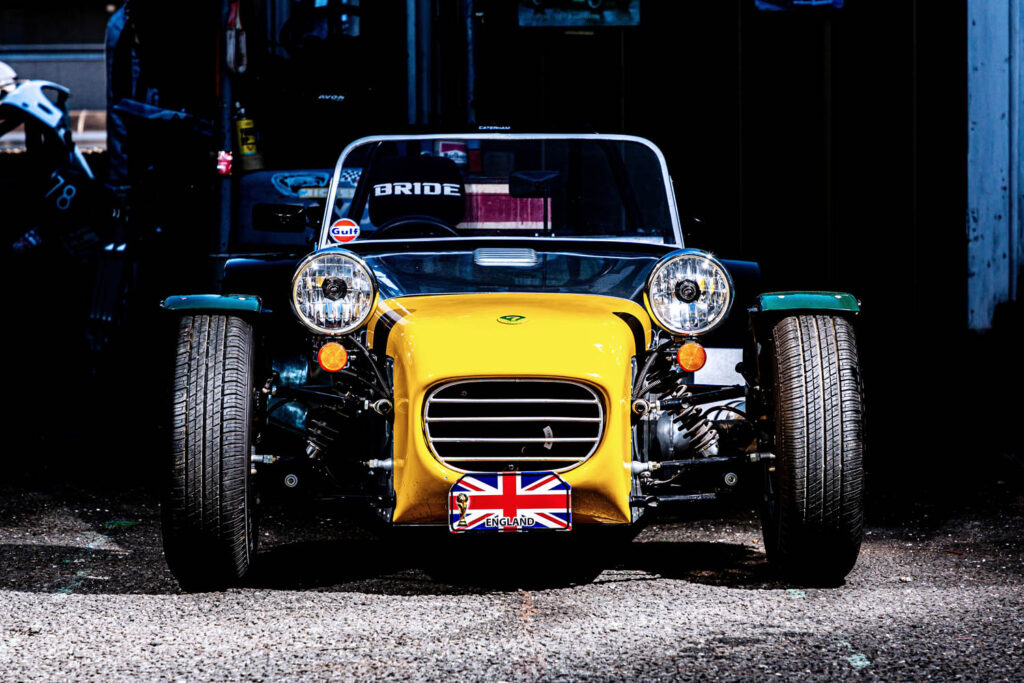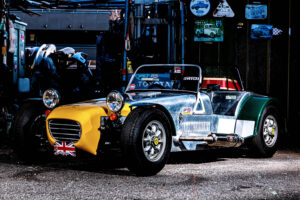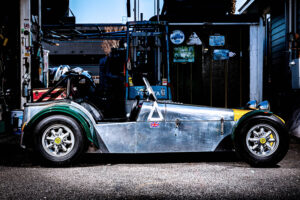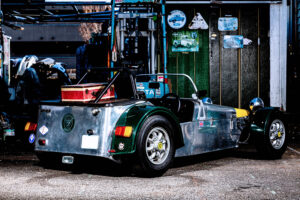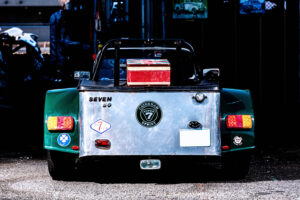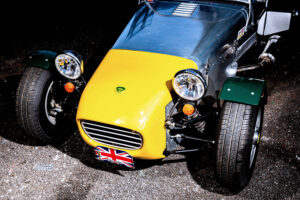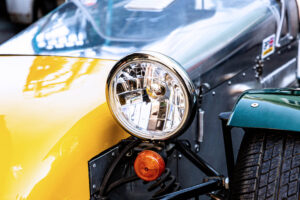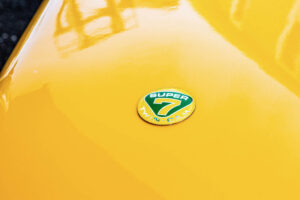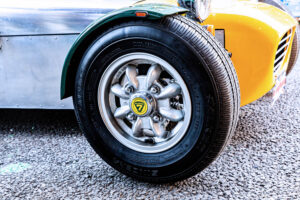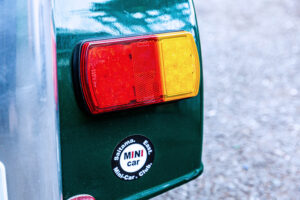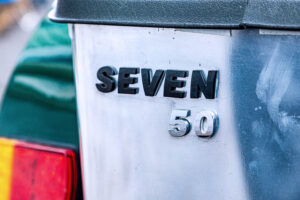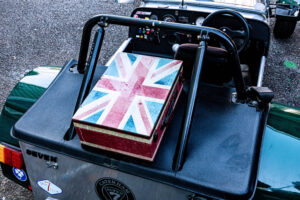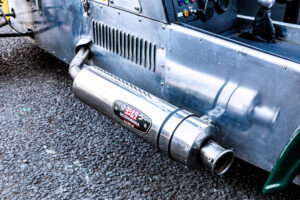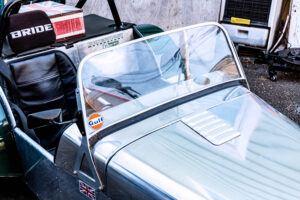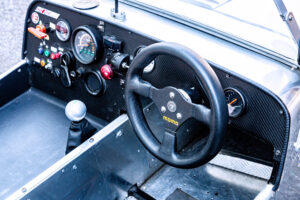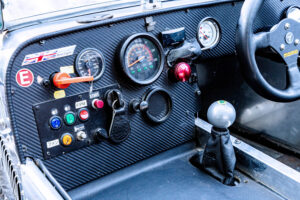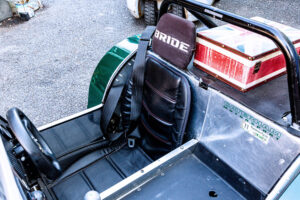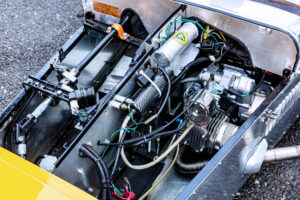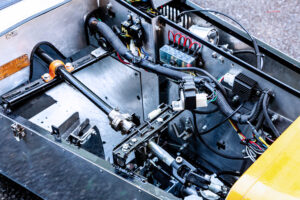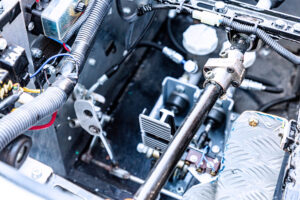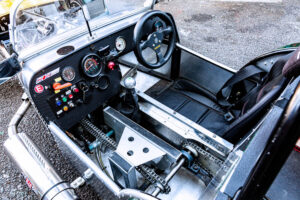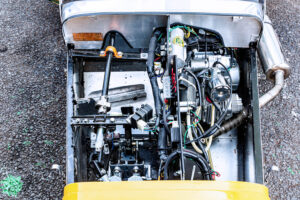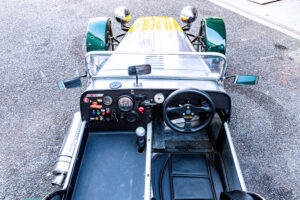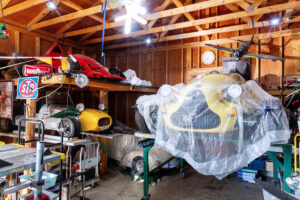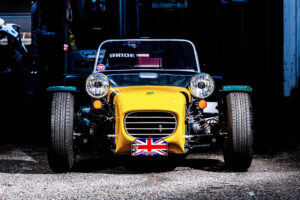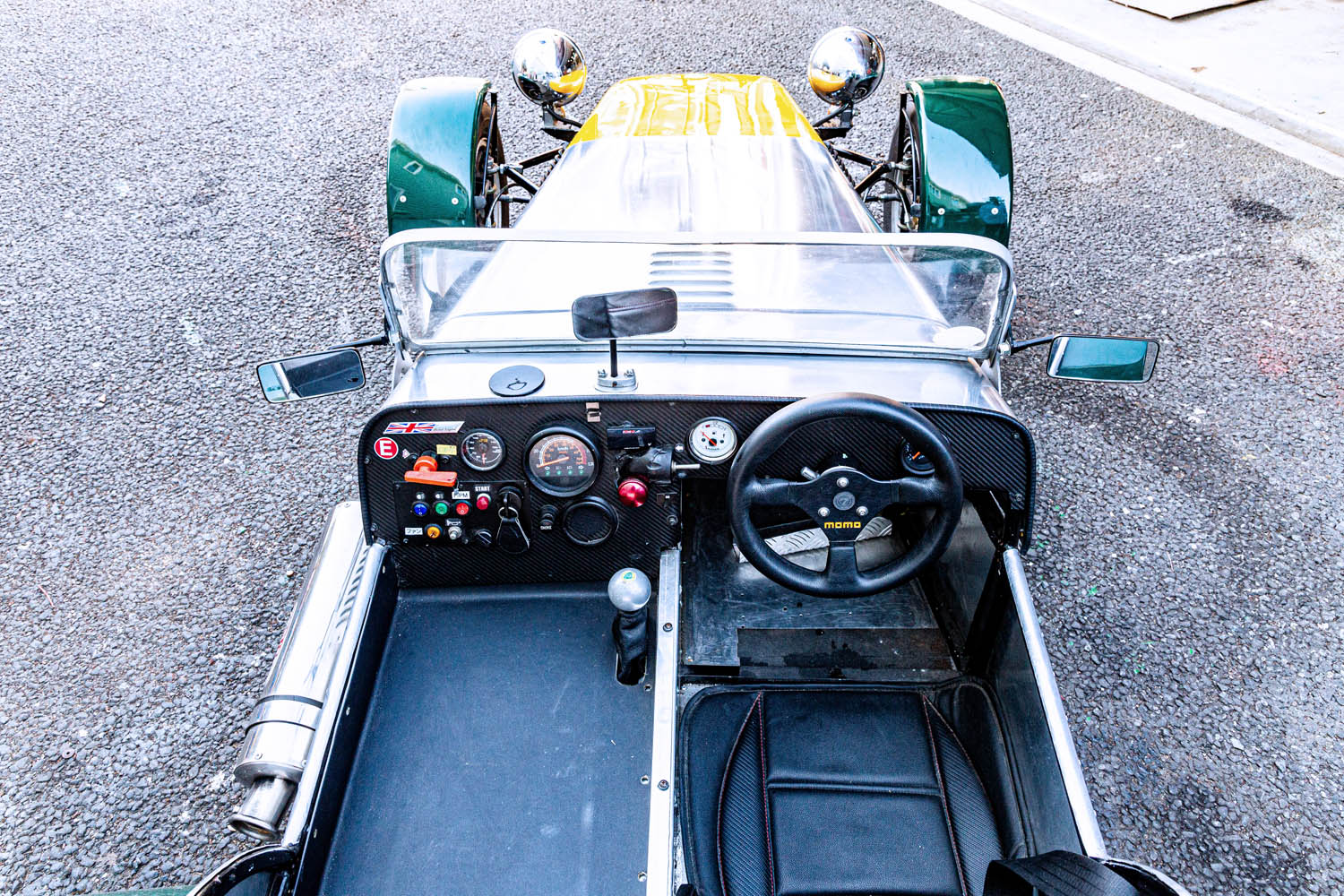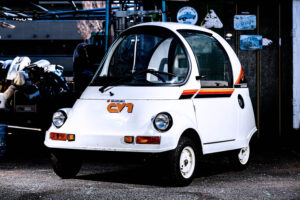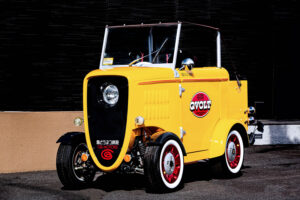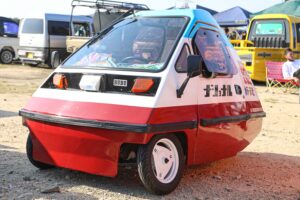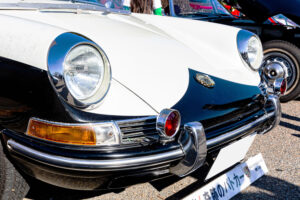The small ‘Seven’ looks like the real thing but is a one-seater and is designed exclusively
The moped car which was sold in very small numbers by Suzuki in the early 1980s, ‘CV1’ was introduced in a previous edition of this series. And the one introduced here is also a moped car. Both are road-legal models with moped license plates and are owned by the same person. However, whereas the CV1 is a ‘mass-produced vehicle’ made by a major car manufacturer, this ‘Seven 50’ is a one-off model, almost entirely hand-made. What is its true identity?
The world of ‘moped cars’ with 50 cc engines
There is a genre of vehicles known as mopeds. According to Japanese domestic regulations, as the name implies, it is an ordinary vehicle with a displacement of 50 cc or less or a motor with a rated output of 0.6 kW or less, and its size is 2.5 m (length) x 1.3 m (width) x 2.0 m (height) or less.
Because of their simplicity, they can be produced even at the level of a small factory and have fewer legal restrictions on their structure than standard cars, a large number of moped cars were released by manufacturers of all sizes in the early 1980s, when energy conservation began to be called for after the two oil crises.
In Japan, the Suzuki CV1 and Mitsuoka Motors BUBU series are well known, but many similar ultra-compact commuters were also created in France and Italy, some of which were imported to Japan at the time. Some of these were imported to Japan at the time. Today, the Toyota Coms, used for convenience store deliveries, is probably the most well-known of these vehicles.
The owner was originally a mechanic in his own right
Kiyoshi Nakamura, born in 1953, is 70 years old and has loved cars and motorbikes since he was a young man. After graduating from Toyota Technical College, he joined Toyota Forklift (now Toyota L&F). He started his career as a professional mechanic.
After studying hard, Mr Nakamura set up his own company to maintain heavy machinery when he was 40 years old. Since then, his business has developed steadily, and while traveling all over Japan, he has also set up a workshop at home for his hobby of tinkering with cars and motorbikes. He lived a busy but fulfilling life.
However, the good things come and go. About 20 years ago, at the age of 50, Mr Nakamura suddenly fell ill. Fortunately, he survived, but the aftereffects of the stroke left him paralyzed on the right side of his body. Although he was able to renew his license with an “automatic left foot accelerator license” for the physically disabled, it became impossible for him to continue working as before, and he was overcome with disappointment.





